
Zombie Vegetable Takeover: a Review of the Bunnicula Series by James Howe
More Videos
Published
3 years agoon

SPOILER ALERT
This so-called review / trip down memory lane goes into some of my favorite scenes from the books, so treat it like garlic or sunlight to a vampire and stay away in your crypt if you do not wish to be barraged with such nostalgic plot-blowing reverie (both regarding the Bunnicula series and some other things thrown in for added flavor).
So to get on with it…
Anyone who spends a lot of time in this genre will nod and shake their heads in understanding when I say that it often comes up, “how or when did you first get into horror?” I don’t know many in this who haven’t been posed that question at some point or another. Hell, I’ve been on both sides of it myself – we all kind of want to know when any among us went through that initiation and what form it took for them… In response, many will often cite R. L. Stine and Goosebumps, or Stephen King, or Nightmare on Elm Street, Friday the 13th, and so on.
For me, it evolved out of my love for language play and my taste for the odd or for things that appeal to the opposite of expectation. I’ve always gravitated towards things that have a kind of off beat inside-joke humor to them. Puns and wordplay are generally a great addition. Surreal and other weirdness is also always good.
I grew up watching campy B-rated movies with my father. The old Universal Studios Classics like Lon Chaney as The Wolf Man or Bela Lugosi as Dracula. And some more obscure flicks too. His collection numbered in the thousands. My favorite was probably The Beginning of the End because of the final scene where the giant grasshoppers descend upon Chicago. I find it endlessly amusing how this scene plays out, since in filming it, they literally just dumped a bunch of grasshoppers on a photograph of Chicago and of the buildings and then tried to pan away whenever the insects would start to walk across the sky or fly off. This still humors me to this day.
I also loved The Addams Family. The old cartoons, the black and white television series, the movies… I especially loved how the movie directly translated scenes and imagery from the cartoons, with Morticia cutting off the roses to keep the thorns or Gomez asking her if she was unhappy and banishing the sunlight. I kind of saw my dad and my stepmother as Gomez and Morticia, and my stepsister and myself as Pugsley and Wednesday. I came to love it even more when it was revealed that their living room from black and white film was actually mostly pink, because that was even more me, especially as I aged into my love of pink things in decidedly un-girly contexts. The living room fit right in. I lived The Addams Family. It was totally a thing.
Like, seriously, get on with it already…
With that background, another big influence was the Bunnicula series by James Howe, which is the subject of this so-called review. I read these books over and over again. I loved the writing style, how the story was told from the standpoint of the dog Harold, and how Chester the cat was so mortified by the unusual happenings that began when the rabbit came into their lives and how obsessive he got about it all. Harold is all-dog and is rather food motivated, as one might expect – you’d almost think he was a beagle, but no. Still, he tells a compelling tale from the standpoint of a dog being a dog, and that’s pretty amusing in and of itself even without the horror twist.
Book 1: Bunnicula earns 4.0 Cthulus
 (4 / 5)
(4 / 5)
The original Bunnicula is the best book in this series by far. The characters and the story are compelling and the book is very amusingly written. It’s fun, especially if you enjoy wordplay, and offers some good lighthearted comedy that can appeal to readers of all ages. I also enjoyed how all of the animals’ personalities come into play and how Harold explains everything from a dog’s perspective. That point of view is truly rather delightful.
My favorite scene in Bunnicula is still the big standoff between Chester and Harold and the family, where Chester has misinterpreted his reading on vampires and is trying to stake little Bunnicula through the heart with an uncooked raw beef steak that had been left on the counter to thaw. Unsurprisingly Harold, being all-dog, is more concerned with when he would get to eat the wondermous piece of raw meat that was totally going to waste in the endeavor. It is just delightful how this scene plays out and still evokes a chuckle from me even this many years later.
Book 2: Howliday Inn
The second book Howliday Inn was not nearly as good as the first. It’s essentially a murder mystery whodunit with your stereotypical cast of suspicious characters: the jock, the floozy, the heartbroken, the sidekick, the crazy, the weirdos, the clumsy, and the annoying. Everyone has their schtick and they all have a motive. You know the scene – very 1980s. Makes for some decent comedy but limited depth… The end reveal of what happened isn’t implausible but at the same time it doesn’t really feel fulfilling, and the book just does not resonate with the same side-splitting humor as the first.
Book 3: The Celery Stalks at Midnight
The third book The Celery Stalks at Midnight revisits the same themes of the first with a lot of added puns thrown in. It was much better than Howliday Inn, but still not as good as the first Bunnicula. It’s funny to see Chester at it again, fretting over Bunnicula turning the town into vampires somehow, Harold still obsessed with food, and the new member of the family, dachshund puppy Howie, bringing his own unique energy to the mix.
Book 4: Nighty-Nightmare
The fourth book Nighty-Nightmare is kind of a cross between the second and third books. Rather than winding up at a pet hotel, the family goes camping as the basis for this spooky woodsy tale. But the book really isn’t all that suspenseful despite the new creepy characters that have joined the cast. Too much gets lost in Chester’s telling of how Bunnicula came to America. Mostly it just seems that Chester is overreacting and fabricating tales to get Harold and Howie (and their guide Dawg) worked up, and his tale is just not very compelling because the vampires seem like more bumbling idiots. But perhaps that’s just how animals see all humans in this world. Also, the ending was really lackluster in my opinion.
Book 5: The Return to Howliday Inn
I don’t recall reading the fifth book, The Return to Howliday Inn. Honestly, I didn’t like the second book set at Howliday Inn as well so I doubt I’ll seek this one out. Maybe it’s better. Maybe not. I don’t know. Pressing onward…
Book 6: Bunnicula Strikes Again
The sixth book, Bunnicula Strikes Again, was surprisingly good. I liked how Howie the dachshund puppy had gotten into the FleshCrawlers series as a direct riff on GooseBumps, in a sort of weird homage and strange disdain all at once. And this story built upon the first book well, coming full circle to the original plot, characters and setting. In the end, the book pulls for the two characters locked in epic battle, Bunnicula the vampire rabbit and Chester the cat, to somehow overcome their differences after they almost perish together, but this comes across as trying too hard to create a happy ending. I feel that the ending it had been careening toward would have been stronger, wherein both perished together, for all that it would likely be disheartening to the intended audience and would not have resulted in any further books in the series.
Book 7: Bunnicula Meets Edgar Allan Crow
There is a seventh book, Bunnicula Meets Edgar Allan Crow, but I have also not read this one. Honestly, I really kind of wish the series had ended with Bunnicula Strikes Again with the epic battle reaching a different end. But that is just my opinion and I’m not the writer, so here we are. Yeah, yeah, I know… what kind of series review is this that it doesn’t even go into all of the books in the series? But I honestly just missed those two and don’t feel like going back to them, besides which this review is too long already. So I’m leaving them out. If you are a die-hard fan, feel free to leave a comment to say how you felt about the books I skipped (or any of the others for that matter).
Apart from the original Bunnicula, I give the rest of the series 3.0 Cthulus.
 (3 / 5)
(3 / 5)
The others really just don’t hold up to the original book in my opinion. From a kid standpoint, they’re probably a more solid 3.5 but I suspect that depends on the kid. In fairness The Celery Stalks at Midnight and Bunnicula Strikes Again are better, but still aren’t on par with the original tale. Still the series is a decent introduction to horror for a kid who loved language and puns and animals and they are rather fun to read. And, given that they were purportedly written by the dog Harold, with the wonderful introductions by the so-called editor, they definitely all have truly dog-based insight moments which can be very amusing at times.
My child-self really enjoyed these books but in adulthood I’ve come to realize I really only remember the first, and for good reason. The others come across as kind of flat. The characters are all pretty caricatured to maximize humorous effect, and can all come across as a bunch of bumbling idiots at times. The series just doesn’t have the same depth as some of the more modern stories.
In other history, the first book was written by both James Howe and his wife Deborah, who also partnered with him on one other book (not in this series), while the rest were written solely by James. I have later learned that Deborah Howe died of cancer before either of the two books they collaborated on were published, and so she never realized just how popular the Bunnicula series became. I can understand, given the popularity of the first book, why James Howe continued it, and they are fun thematically, but sadly the rest of the series just lacks some of the same spark that the first had. If you only pick up some of the books in this series, definitely read the first Bunnicula, and then perhaps The Celery Stalks at Midnight and Bunnicula Strikes Again – those are by far the strongest and most heartfelt.
You can purchase Bunnicula and/or the box series on Amazon from the links provided above, just remember that, as always, if you do so we will get some $ back. The Dark Lord says shop away…
Jennifer Weigel is a multi-disciplinary mixed media conceptual artist residing in Kansas USA. Weigel utilizes a wide range of media to convey her ideas, including assemblage, drawing, fibers, installation, jewelry, painting, performance, photography, sculpture, video and writing. You can find more of her work at: https://www.jenniferweigelart.com/
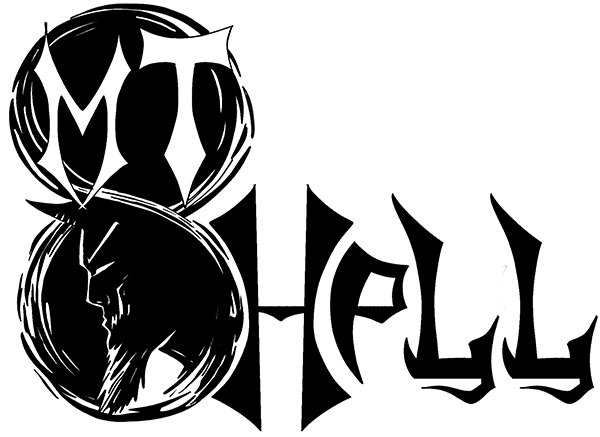
You may like
2 Comments
Leave a Reply
Cancel reply
Leave a Reply
This site uses Akismet to reduce spam. Learn how your comment data is processed.
Book Reviews
The Hotel: We’ll All Be There Soon.
Published
2 months agoon
March 17, 2025By
C M ReidDaisy Johnson’s, The Hotel is a collection of stories that tell the tale of a hotel built on cursed land. Originally written and recorded as a series for BBC Radio 4 in 2020, (you can find the recordings here https://www.bbc.co.uk/programmes/m000mrcg/episodes/player )
The fourteen-story collection was released in hardcover in 2021. Johnson’s prose is haunting, weaving together the stories of generations of families who have been tempted, forced, or serendipitously dumped at The Hotel. Most leave the message, “I’ll be there soon,” and many disappear from room 63.
- ‘The British literary heir to Stephen King’ Johanna Thomas-Corr, Sunday TimesA triumph of contemporary horror from the Booker Prize-shortlisted author, this collection of short stories will haunt you long after you turn the final pageA place of myths, rumours and secrets, The Hotel looms over the dark Fens, tall and grey in its Gothic splendour
- Built on cursed land, a history of violent death suffuses its very foundations –yet it has a magnetism that is impossible to ignore
- On entering The Hotel, different people react in different ways
Last update on 2025-03-17 / Affiliate links / Images from Amazon Product Advertising API
The Plot.
The Hotel tells the stories of the people who are drawn to The Hotel, or, more accurately, the ground the hotel is built on. The first story explains what we know about the hotel, its tendencies, moods, and … hobbies. We are then introduced to Mary Southgraves, ‘The Witch’, who comes to live with her husband on the land on which The Hotel will be built. The villagers in the pond drown her for predicting a sickness that takes the village children, (no this is not a spoiler she tells you she dies on the first page of her chapter.)
The proceeding chapters build upon this story. We meet the workers who are brought in to fill the pond to begin construction. A child of a guest in 1968 who meets another girl who may or may not actually be there. A maid who takes part in séances and Ouija board sessions. The stories progress through time into the present.
Highlights.
The haunting prose of The Hotel does the majority of the heavy lifting for this collection, which makes sense since it began as a podcast series. Johnson’s prose leans towards poetry, albeit more Poe than Keats.
The repetition of specific characters and family names throughout the different stories was intriguing, giving the stories links. These links trigger a sense of recognition for the reader. There is also a sense of anticipation, knowing what has happened to these families already, we wonder how much more they can withstand. The Hotel is like a curse following these families, but I think Johnson is commenting on lineage and the consequences of past actions. The sins of the father and all that.
- Fifteen highly original and darkly unsettling supernatural stories, performed by some of Britain’s finest actresses ‘This is what we know about The Hotel
- It is bigger on the inside than on the outside
- Do not go into Room 63
Last update on 2025-03-17 / Affiliate links / Images from Amazon Product Advertising API
Drawbacks.
These stories can get confusing at times and I think this is due to the briefness of the stories. It’s hard to keep track of a character that you have spent four pages with and remember them three stories later. I found myself having to stop and turn back to check if that person was who I thought they were. This pausing to turn back interrupts the reading experience. It pulls you out of the story and destroys the atmosphere that Johnson has worked to create.
The Final Take.
The Hotel was an interesting read. Johnson is a talented writer who has published a collection of linked stories that will keep the reader turning pages if only to find out the final fate of these families. That being said, it is obvious that the stories were initially written for a podcast. I’m not sure if it’s the way they are put together or… I don’t know, there’s just something ‘podcasty’ about them. As such I would recommend listening to the audio episodes (see the link above) over reading the book.
 (3 / 5)
(3 / 5)
On Halloween in 2016 Josh Malerman, author of Bird Box, released A House At The Bottom Of A Lake (gosh this is a hefty title!). Last week, I picked this slim book up off my library’s Adult Horror shelves, not knowing what to expect. What I got was a novella that should have been shelved in the teen lit section. Perhaps it is the rather weird underwater sex scene that precludes it from those shelves.
- From the New York Times bestselling author of Bird Box and Malorie comes a haunting tale of love and mystery, as the date of a lifetime becomes a maddening exploration of the depths of the heart
- “Malerman expertly conjures a fairy tale nostalgia of first love, and we follow along, all too willingly, ignoring the warning signs even as the fear takes hold
- ”—Lit Reactor The story begins: young lovers, anxious to connect, agree to a first date, thinking outside of the box
Last update on 2025-03-10 / Affiliate links / Images from Amazon Product Advertising API
The Plot.
When James asks Amelia out on a date during summer break, canoeing was the last thing that she expected. Borrowing his uncles canoe, James hopes he can show Amelia an exciting time, because he really likes this girl! The date starts well and the conversation, if stilted at times, is banter-ey and cool.
They head out on the first lake, but James has an idea that they might have a better time on the lake that joins to this one. It is quieter, no speed boats to show him up, they’ll be able to eat their picnic lunch in peace and quiet. When they arrive, though, they notice a tunnel, that may lead to a third lake. Eager to show Amelia that he is an exciting kind of guy, James heads through the tunnel.
Lo and behold, it is another lake! Albeit, a bit murky and deserted, but that’s alright. That is until they notice that beneath the bow of the boat is a tiled roof. Beneath that tiled roof is a whole house. What ensues is a summer of falling in love and exploring a sunken house that may not be as empty as they thought.
Highlights.
Malerman writing the internal monologue of an angsty seventeen-year-old on a first date is one of the most authentic things I’ve read for a long time. Even down to James worrying about revealing that his dad owns the hardware shop he works in. Scared that Amelia will think that is all he is going to do with his life.
The ending (which of course I cannot discuss here) was well done, although a little contrived and predictable. It felt as if it had been almost tacked on the end as an afterthought. Perhaps Malerman finished the story without the final chapter, but was encouraged to add that last bit to give readers some closure
- “A book that demands to be read in a single sitting, and through the cracks between one’s fingers
- There has never been a horror story quite like this
- Josh Malerman truly delivers
Last update on 2025-03-10 / Affiliate links / Images from Amazon Product Advertising API
Drawbacks.
Malerman is a good writer, we have seen this in the many novels he has released since Bird Box. A House At The Bottom Of A Lake did not meet the usual standard. There are many reasons I say this. The first is a lack of creativity in descriptive passages in this book. They all felt pretty drab and began to become repetitive by the end of the story. I don’t know how many, times Malerman compared the way that James and Amelia were moving under the water in their scuba suits as ‘Astronaut-like’ or ‘Astronaut-esque’ or ‘ Like he was walking without gravity’, but really can you find another comparison please because this one is all used up!
As I mentioned in the intro, this did feel like a YA novel. Not only because both of the main characters are seventeen, but the prose is a too simple to be engaging. A House A The Bottom Of A Lake might be marketed differently in Australia (where this humble reviewer lives), perhaps making it to the YA shelves in the US or UK, but this is definitely not adult horror.
The Final Take.
Josh Malerman is a favorite of mine. I tend to pick up his books, blurb unread, because I will generally enjoy what he is putting out there. The exception to this rule is A House At The Bottom Of A Lake (if I never have to type that title again I will be pleased!). It just didn’t hit the way his other novels have and I was disappointed.
 (2 / 5)
(2 / 5)
Imagine this. You’re home alone, waiting for your partner to return, when you hear a knock on your door. You answer it to see a family of five, bundled up against the cold. The father, a kindly older gentleman, explains that he used to live in this house as a boy. And he would love to show it to his family.
Do not let them in.
The story
Released in June 2024, We Used To Live Here is author Marcus Kliewer’s debut novel. It tells the story of Eve, who just purchased a beautiful house with her partner, Charlie. Their plan is to flip the house and sell it.
One night, while waiting for Charlie to come home, Eve is surprised by a knock at the door. It’s a man named Thomas Faust and his family.
Thomas explains that he grew up in the house and hasn’t been in the area in years. Would Eve let them in so that he can show the home to his children?
Against her better judgment, Eve lets them in. She regrets this almost at once when Thomas’s daughter vanishes somewhere into the house.
What worked
I always appreciate a book that allows you to play along with the mystery. And this book does that better than just about any other I’ve seen.
Pay close attention to the chapters, to the words that aren’t there. To everything about this novel.
This is mostly down to Kliewer. This is ultimately his work of art. But the production value is also fantastic. I don’t want to ruin the multiple mysteries, so I’ll just say this. There are clues in this book that require some specific artistic choices in the page layouts in this book. And I loved that.
If you’d like to experience another horror book review, check out this one.
We Used To Live Here is also the kind of story that makes you question everything right along with the main character, Eve. Eve is a great main character. But she might be an unreliable narrator. She might be experiencing every single horror described, exactly as it’s described. Or, she might be having a psychotic breakdown. Through most of the book, we can’t be sure. And that is so much fun.
Finally, the weather plays a large part in this story. There are several stories in which the weather or the land itself could be considered a character. Even an antagonist. This is certainly one. The winter storm is the thing that traps the family in the house with Eve. It also makes escaping the home difficult. Reading this book during the winter was especially impactful. Most of us know what it feels like to be shut in by a storm. I’ve personally lived through some of those storms that are just referred to by their year, as though they were impactful enough to claim the whole 365 days for themself. And that was with people I liked. Imagine what it would feel like with strangers. It’s a staggering thought and one that we explore in depth in this book.
- Get Out meets Parasite in this eerily haunting debut and Reddit hit—soon to be a Netflix original movie starring Blake Lively—about two homeowners whose lives are turned upside down when the house’s previous residents unexpectedly visit
- As a young, queer couple who flip houses, Charlie and Eve can’t believe the killer deal they’ve just gotten on an old house in a picturesque neighborhood
- As they’re working in the house one day, there’s a knock on the door
Last update on 2025-03-08 / Affiliate links / Images from Amazon Product Advertising API
In the end, We Used To Live Here is a fantastic book. It’s the sort of story that sneaks into your brain and puts down roots. And if this is just the first book we’re getting from Kliewer, I can’t wait to see what else he comes up with.
 (5 / 5)
(5 / 5)



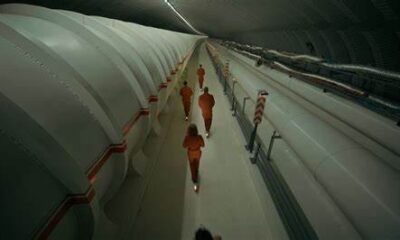

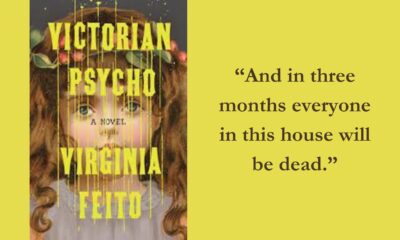



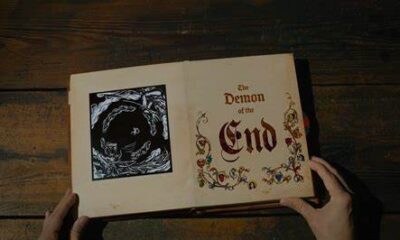

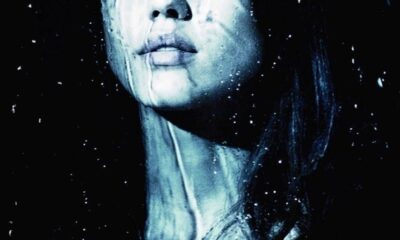

Nicole C. Luttrell
August 17, 2022 at 3:27 pm
Oh my goodness, I freaking love these books!
Jennifer Weigel
August 21, 2022 at 4:16 am
Yeah it had been a long time since I read them but they were really influential on my child self. 🙂
Did you happen to read the ones I missed? If so, please offer some thoughts. How do they compare?